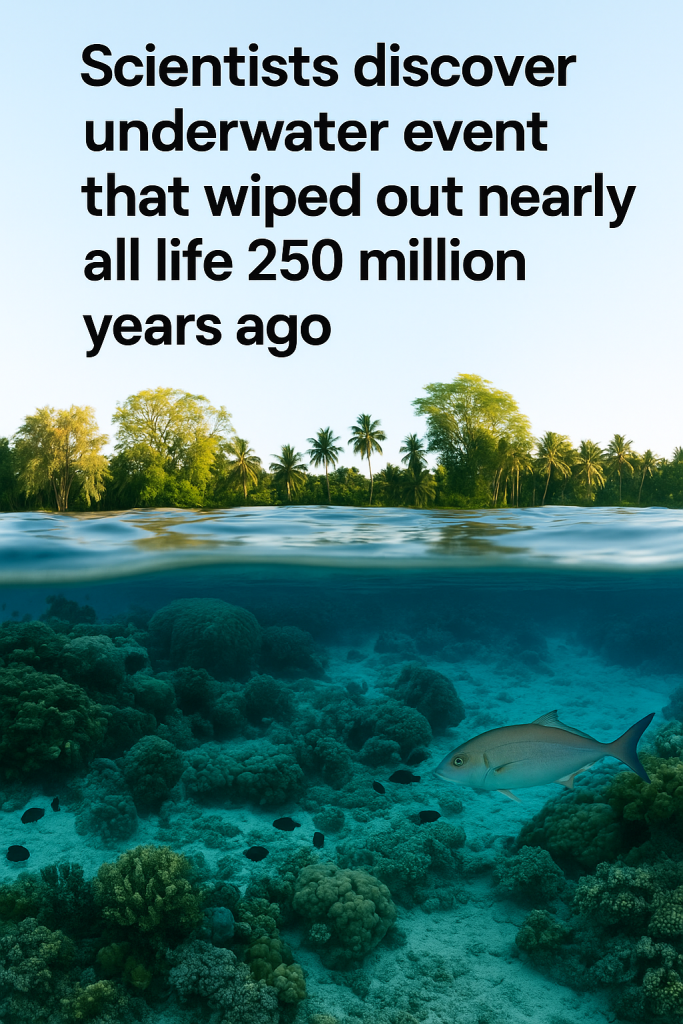In a groundbreaking discovery that sheds new light on one of Earth’s darkest periods, scientists have identified a massive underwater event that nearly annihilated all marine life approximately 250 million years ago. This catastrophic incident, linked to the Permian mass extinction, is now believed to have played a pivotal role in the largest extinction event in Earth’s history.
The Permian mass extinction, often referred to as “The Great Dying,” saw the disappearance of about 90-96% of all marine species and 70% of terrestrial vertebrate species. For decades, researchers have debated the precise causes behind this vast loss of biodiversity. Recent studies have now pinpointed an underwater disaster that drastically altered ocean conditions, creating a deadly environment for nearly all life forms.
New Insights from Marine Sediment Analysis
A team of international scientists analyzed sediment cores from ancient seafloor deposits, revealing compelling evidence of a sudden and extreme underwater event. These sediments contain chemical signatures and fossil remnants that indicate rapid ocean acidification, severe oxygen depletion (anoxia), and widespread volcanic activity beneath the ocean surface.
The researchers propose that massive volcanic eruptions on the ocean floor—likely linked to large igneous provinces—triggered a chain reaction, releasing greenhouse gases such as carbon dioxide and methane into the water and atmosphere. This led to rising global temperatures, ocean acidification, and the collapse of marine ecosystems.
“Our data reveal that this underwater volcanic activity created a lethal cocktail of environmental stressors that marine life could not survive,” explained one of the lead scientists. “This event rapidly changed the chemistry of the oceans, essentially suffocating virtually all marine organisms and collapsing the food chain.”
Implications for Understanding Mass Extinction
This discovery challenges earlier assumptions that atmospheric changes alone triggered the Permian extinction, emphasizing the crucial role of oceanic processes. The underwater catastrophe not only decimated marine biodiversity but also altered the planet’s climate system, with repercussions felt across terrestrial ecosystems.
Scientists suggest that this event unfolded over thousands of years, though the precise timeline remains under investigation. They also note that the recovery of life after the extinction was slow and patchy, with marine ecosystems taking millions of years to regain their previous diversity.
Modern Relevance
Understanding ancient underwater disasters provides critical insights into how current marine ecosystems might respond to ongoing environmental pressures, such as climate change, ocean acidification, and deoxygenation. The study highlights the fragile balance of ocean chemistry and its direct impact on life sustainability.
“Studying these past events helps us grasp the potential consequences of human activities on marine biology and global climate,” remarked another expert involved in the research. “It underscores the urgency of protecting our oceans today to prevent a similar catastrophe.”
This discovery marks a significant advance in paleontology and Earth sciences, offering a vivid glimpse into a perilous moment when underwater forces reshaped life on Earth. As scientists continue to unravel the mysteries of the Permian extinction, this underwater catastrophe stands out as a crucial piece of the complex puzzle that defines Earth’s evolutionary history.



